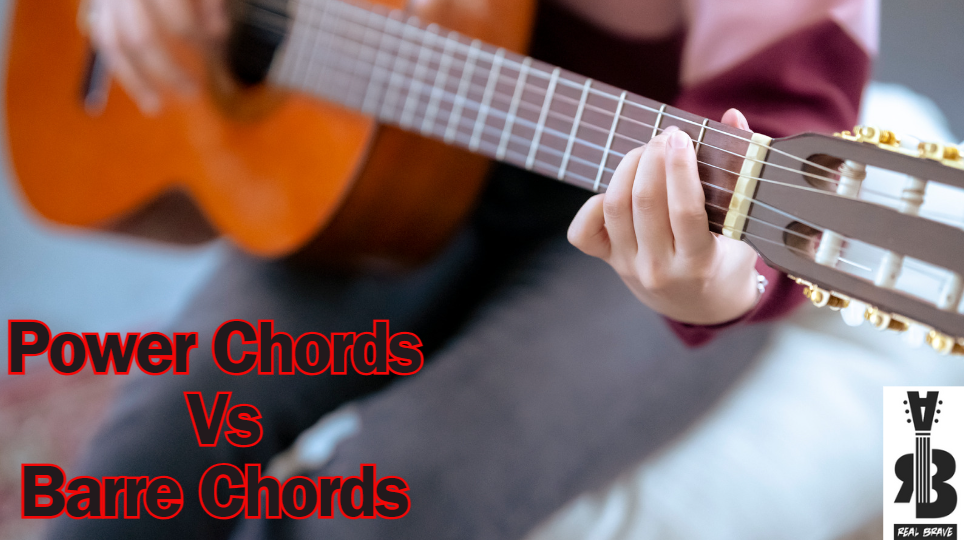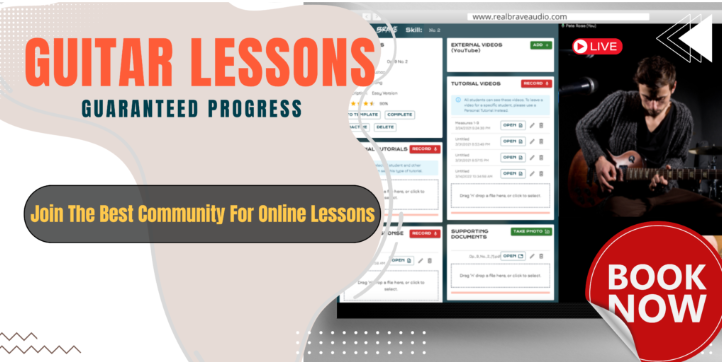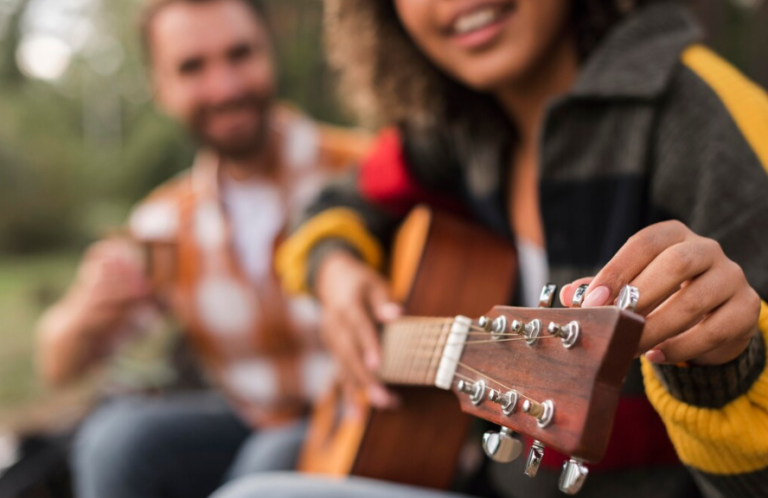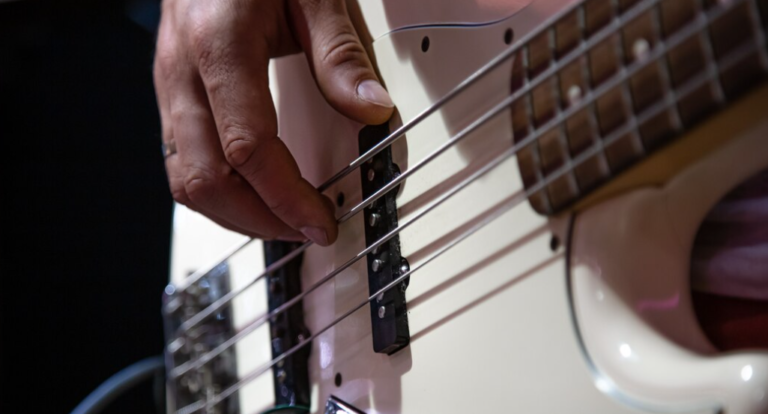The Amazing World of Power Chords and Barre Chords

Power chords and barre chords are both fundamental techniques used in playing the guitar. They both play important roles in guitar playing, offering different sounds, characteristics, and applications in various musical styles.
How To Differentiate Between Power Chords And Barre Chords
Power Chords
- Power chords are typically played using just two or three notes.
- They consist of the root note, the fifth, and sometimes the octave of the root note.
- They are neither major nor minor, which means they can fit into both major and minor keys
- Power chords have a strong, aggressive sound and are commonly used in rock, punk, and metal music.
- They are easy to play because they don’t require complex finger positions or barring across multiple frets.
- Power chords are often played using only two fingers, making them accessible for beginners.
- Since power chords don’t contain a major or minor third interval, they lack the tonal quality that defines major or minor chords, which makes them suitable for genres where tonality is less important.
Barre Chords
- Barre chords involve using one finger, usually the index finger, to press down multiple strings across one fret.
- Barre chords can be major, minor, or dominant, depending on the chord shape and positioning on the fretboard.
- They provide a fuller, richer sound compared to power chords because they incorporate more notes, including the major or minor third that defines the chord’s quality.
- Barre chords are essential for playing a wide range of music styles, including rock, pop, blues, jazz, and more.
- Learning to play barre chords effectively requires strength and dexterity in the fretting hand, so they can be more challenging for beginners compared to power chords.
- Barre chords allow for greater harmonic complexity and versatility in chord progressions, as they can be moved up and down the fretboard to play different chords in different keys.
When To Use Power Chords vs. Barre Chords
- Skill Level and Comfort: If you’re a beginner or struggling with barre chords, starting with power chords can be a wise choice. They are easier to play and can help you build your way up to more complex barre chords.
- Genre and Sound Preference: Power chords are often associated with punk rock and heavy metal genres. They provide a punky, edgy sound that’s simpler to play. On the other hand, barre chords offer a broader range of sounds, from bright and uplifting to melancholy and bluesy.
- Context and Musical Needs: The choice between power chords and barre chords depends on the sound you want to achieve and what’s appropriate for the context. If you’re playing in a specific key and need to maintain harmony, choosing the right barre chord is essential. If you’re looking for a specific sound like a Metallica or punk song, power chords might be the way to go
- Power Chords in Punk Rock: Many guitar players in punk rock prefer power chords for their simplicity and specific sound. Even professional musicians sometimes opt for power chords to achieve a particular effect
- Barre Chords for Versatility: Learning barre chords opens up endless possibilities in terms of sonic textures, color palettes, and moods. From major to minor variations, barre chords offer a rich and diverse range of sounds.
- The Lazy Approach: Some guitarists admit to avoiding barre chords out of laziness or comfort with power chords. However, learning barre chords can make you a more versatile player, strengthening your hand and expanding your musical horizons.
Tips for Practicing Power Chords and Barre Chords
Practicing power chords and barre chords effectively can significantly improve your guitar skills and mastery of these techniques. Here are some tips to help you along the way:
- Start Slowly: Whether you’re practicing power chords or barre chords, start at a slow tempo and focus on accuracy and clarity. Gradually increase the speed as you become more comfortable with the chord shapes.
- Use a Metronome: Practicing with a metronome can help you develop a steady rhythm and improve your timing. Set the metronome to a comfortable tempo and practice playing along with it.
- Focus on Finger Placement: Pay close attention to the placement of your fingers when playing power chords and barre chords. Make sure your fingers are positioned correctly to produce clean, ringing notes. Adjust your finger pressure as needed to avoid muting or buzzing strings.
- Practice Transitions: Work on smoothly transitioning between different power chord and barre chord shapes. Practice common chord progressions and focus on making seamless transitions between chords.
- Strength and Endurance Exercises: Building strength and endurance in your fretting hand is crucial for playing barre chords effectively. Incorporate exercises such as finger stretches, finger strengthener tools, and practicing chord shapes for extended periods to build strength and endurance.
- Take Breaks and Rest: It’s essential to give your fingers and hands adequate rest to prevent fatigue and injury. Take short breaks during practice sessions and listen to your body if you’re experiencing discomfort or strain.
- Seek Feedback: Record yourself practicing power chords and barre chords and listen back to identify areas for improvement. Additionally, consider seeking feedback from a guitar teacher or experienced guitarist to receive constructive criticism and guidance.
The decision to play power chords or barre chords is not a matter of right or wrong but rather a choice based on your skill level, musical preferences, and the sound you want to achieve. Embracing both types of chords can enrich your playing experience, offering a wide array of sounds and expressions.
Whether you’re a beginner starting with power chords or an experienced player exploring the endless possibilities of barre chords, the journey of learning and experimenting with these chords is rewarding. So, go ahead and explore both power chords and barre chords and let your creativity flow!
Interested in taking your guitar skills to the next level? Click the below and book a free lesson with us! We’re committed to helping you express yourself freely on the guitar without endless scales and theory. Happy playing!
Author: Daniel Powers Jr, the founder of Real Brave™, serves as the chief inspiration to thousands of students in the Real Brave music instruction program. He’s also the visionary behind PracticePad™, an online platform for live one-on-one online music lessons, lesson tracking, and scheduling. Beyond his entrepreneurial pursuits, Daniel leads a non-profit organization that provides formerly homeless children with access to music education, making a profound impact on their lives. His unwavering dedication to music, innovation, and education continues to inspire individuals to reach their fullest potential while creating positive change in communities. Follow Real Brave on all the socials:
youtube.com/@realbraveinc
twitter.com/realbraveinc
instagram.com/realbraveaudio
facebook.com/realbraveinc






